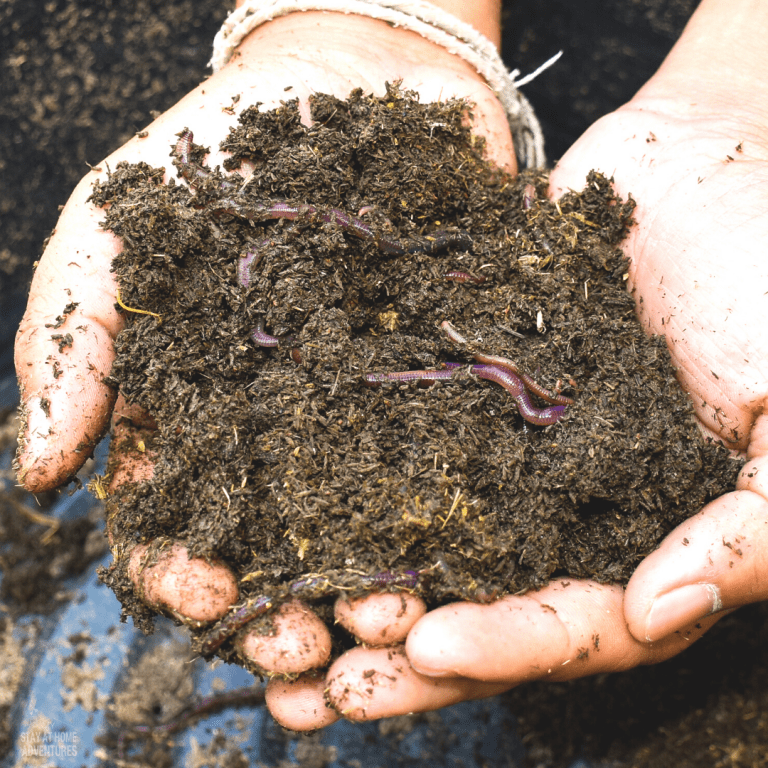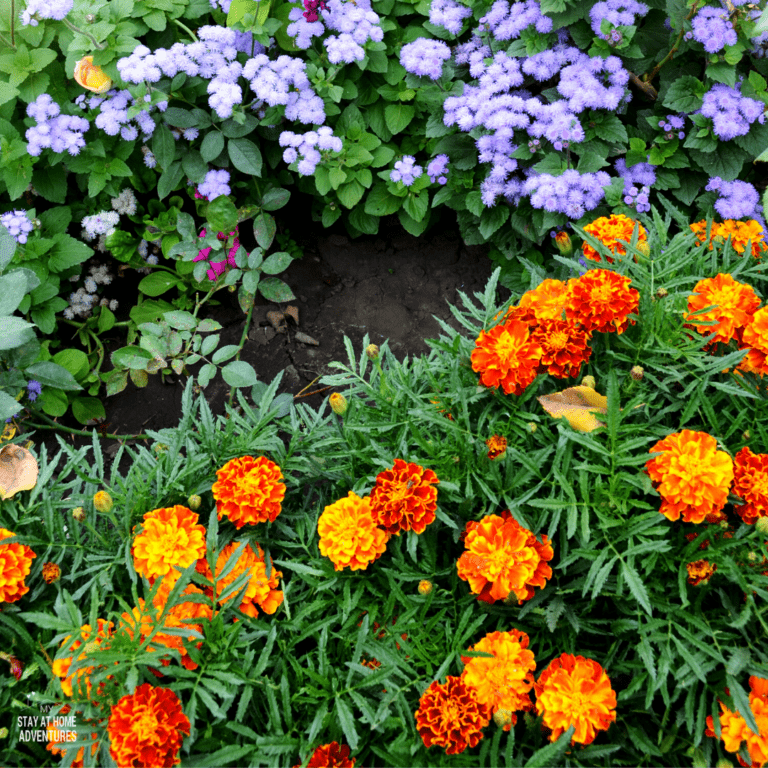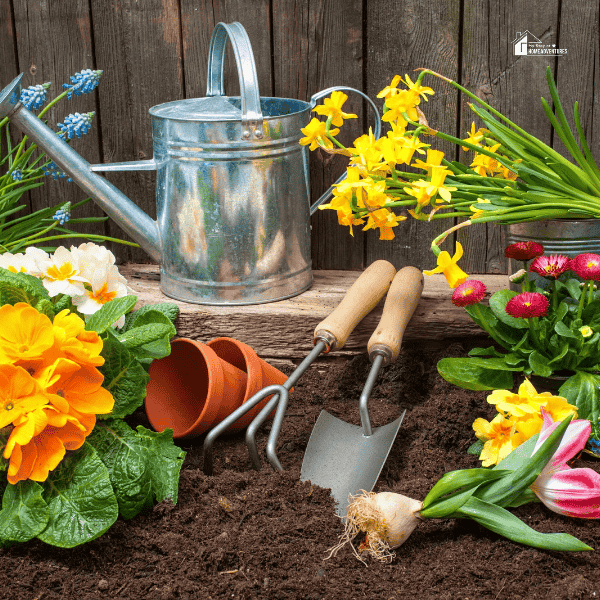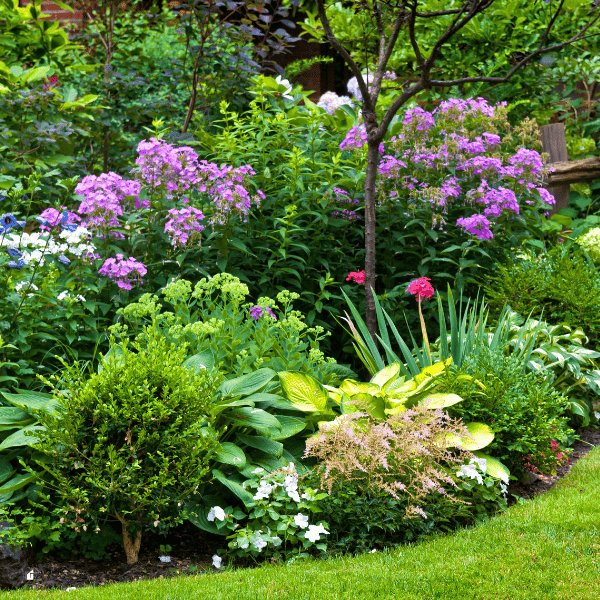20 Best Low Light Houseplants
This post may contain affiliate links which might earn us money. Please read my Disclosure and Privacy policies hereWe know plants help our environment clean the air we breathe. Having a garden of your own, however small and vast it is, gives us a sense of satisfaction and relaxation and, most of all, relieves stress. Plant lovers extend their gardens inside their homes. Low Light Houseplants are what they need.
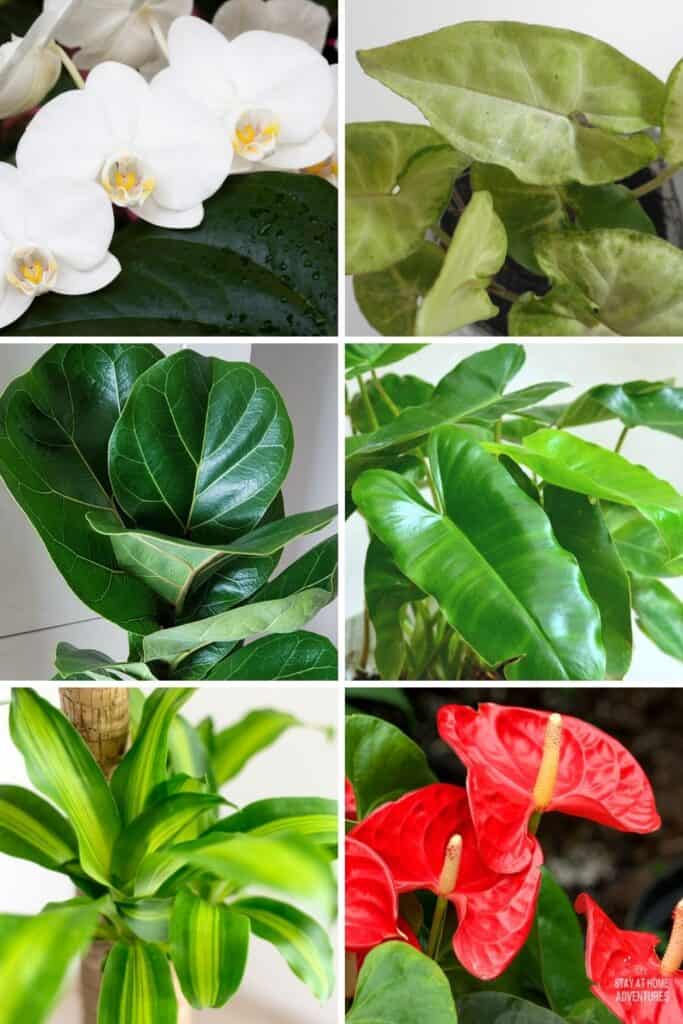
I have seen buildings with plants, not only in their lounge areas but also in their hallways, offices, and work areas. Plants make the area so lively. It can also add accents to the interior.
Plants that can live and grow well in low light and indirect sunlight should be chosen to make this work.
Here are several best low-light houseplants that you can choose from.
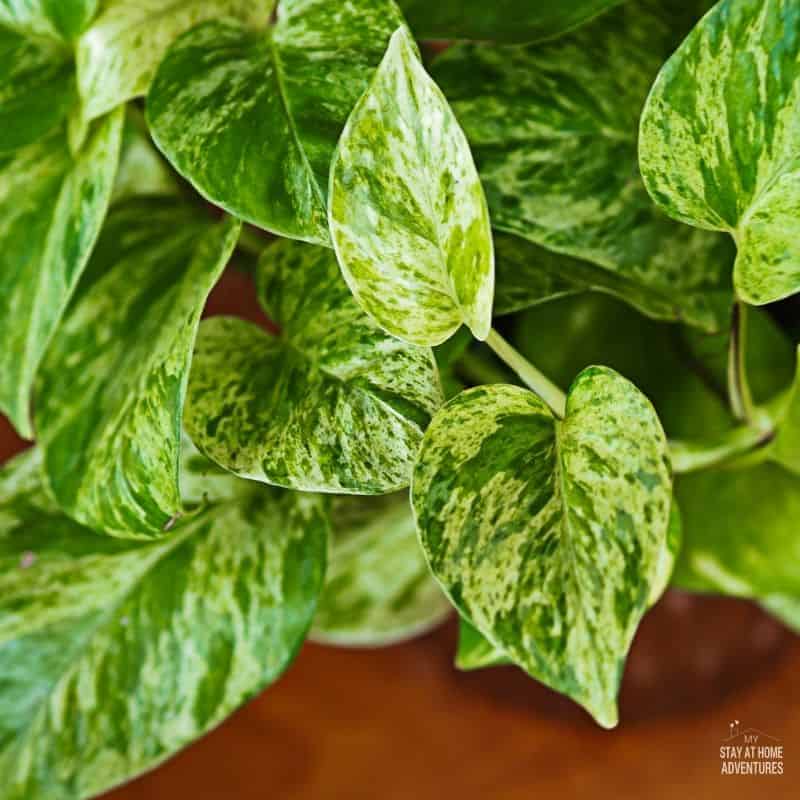
1. Pothos
Pothos have several varieties. They are also called in many names. Scientifically, these are
Epipremnum Aureum (the most common), Scindapsus aureus, Rhaphidophora aurea, or Epipremnum pinnatum. It is also called Devil’s Ivy.
They all thrive in low light, but they tend to grow faster when they are in bright but indirect sunlight. It is best to place them inside where they can receive indirect sunlight, such as near the window.
`They are very easy to grow and propagate. The most common propagation for these plants is by cutting and then placed in a container with filtered water. When roots grow for at least 1 inch, they can be transferred to the soil. But these can also be planted directly in the soil right after cutting them. I have successfully grown them with that method.
Several varieties of these pothos are golden pothos, jade pothos, marble queen, Manjula, n joy, neon, and silver pothos.
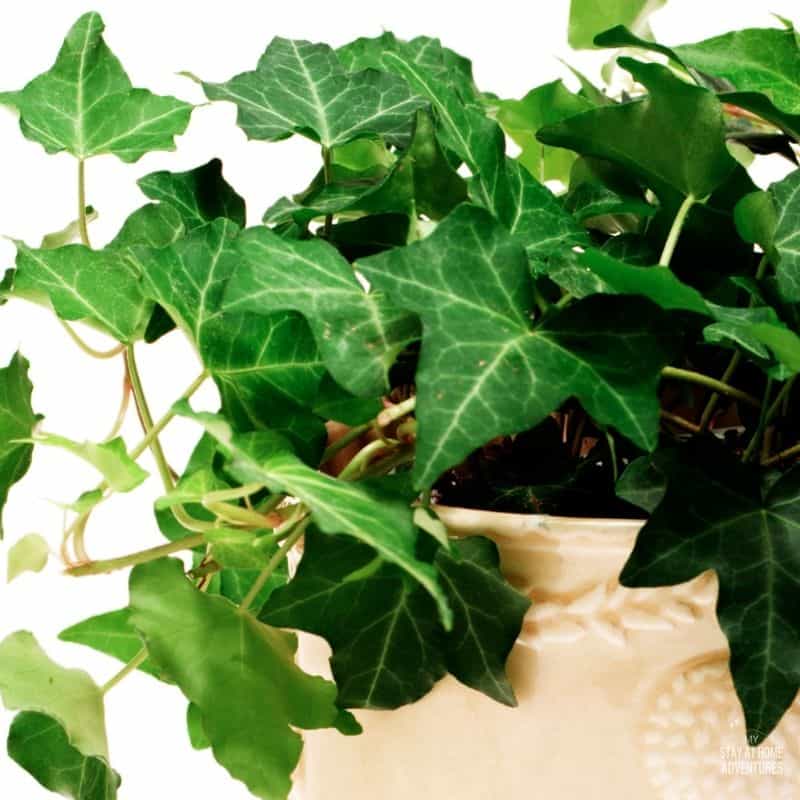
2. English Ivy
These English Ivy Plants (Hedera helix) are vigorous evergreen perennials and are classified as woody vines. It is native to Europe and some parts of Russia.
They grow partly in a fully shaded area, and they like their soil moist and fertile. They can also grow well in bright indirect sunlight. Variegated cultivars usually do better in a shaded area but tend to grow leggy if not in a bright area for a long time.
They can grow up to 100 feet long in some instances. They can be grown climbing on the wall or trellis or covering the ground if grown outside. This plant is very popular as a house plant in pots, usually with stakes or in a hanging planter.
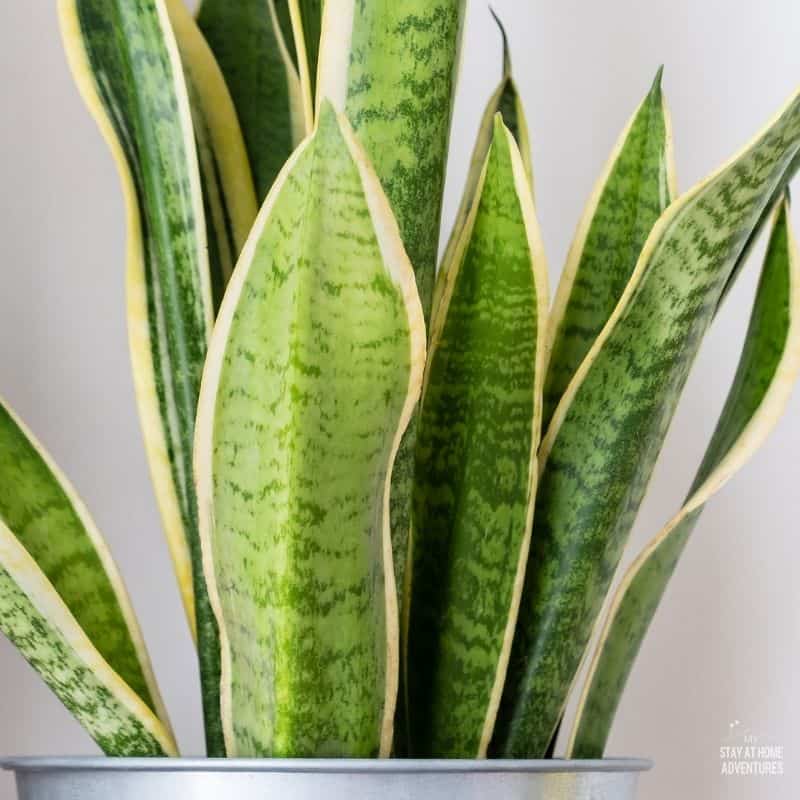
3. Snake Plants
Also known as Saint George's sword, mother-in-law's tongue, good luck plant, golden bird’s nest. and viper's bowstring hemp (Sansevieria trifasciata / Dracaena trifasciata).
A very popular perennial flowering house plant for being low maintenance, easy to grow and can tolerate low light. It is also known for the plant’s air cleaning property.
According to a NASA study, a Dracaena trifasciata cultivar ‘Laurentii’ (Sansevieria laurentii) helps remove harmful toxins from household air. Among the airborne chemicals that snake plants eliminate are nitrogen oxide, benzene, xylene, and formaldehyde.
These snake plants can be easily propagated in water (cut healthy leaves and regrow in water), soil (place a leaf that was removed directly in soil), by division (divide the snake plant in half), and from rhizome (underground stems can grow into new plants).
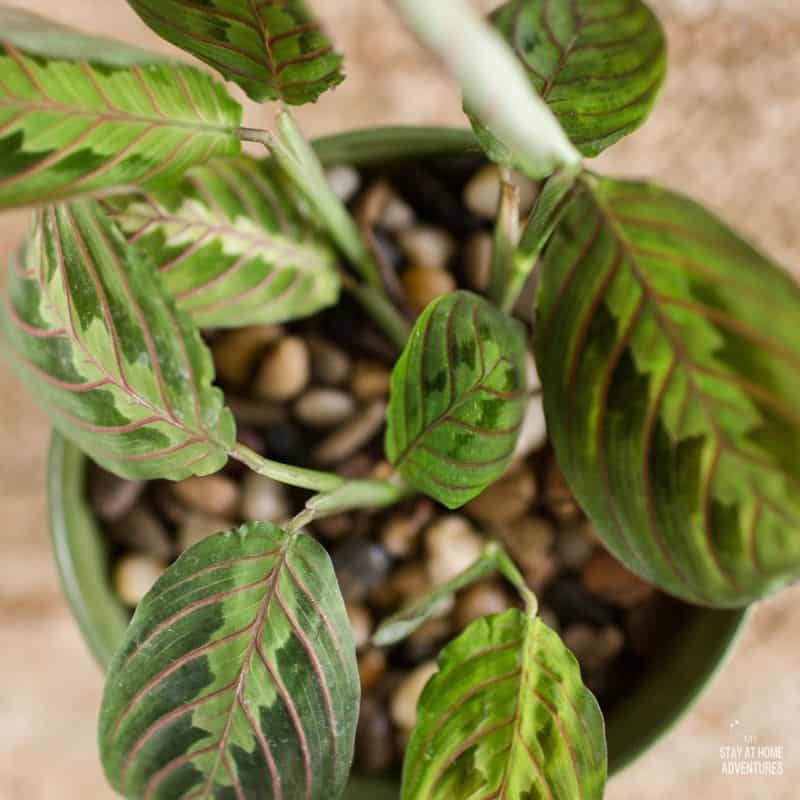
4. Prayer Plants
The leaves tend to fold together at night, like a pair of praying hands, hence the name Prayer Plant (Maranta leuconeura). It is also called praying hands.Sometimes, this Maranta is mistaken to be the same as the calathea. They are both from the Arrowroot family, Marantaceae, but they belong to a separate genus. Maranta plants are the true prayer plants.
It may be slow growing, but the beautiful foliage design earned its way to become a popular house plant. This hardy indoor plant likes its soil moist but not sopping wet. You’ll know that the soil is often too dry when the leaves start to turn brown.
These plants like low light and a bit of moisture. It will be nice to place them among other plants to keep the humidity. You may also place a container with water beside it or place on a tray with water and pebbles to avoid soaking the plant.
Propagating prayer plants is by dividing them through its roots while repotting. Another way is by stem cutting below a leaf node. Then dip the cutting in a rooting hormone and place in a glass of water. Make sure to replace the water every 2 or 3 days. When root forms, plant into potting soil and keep the soil moist.
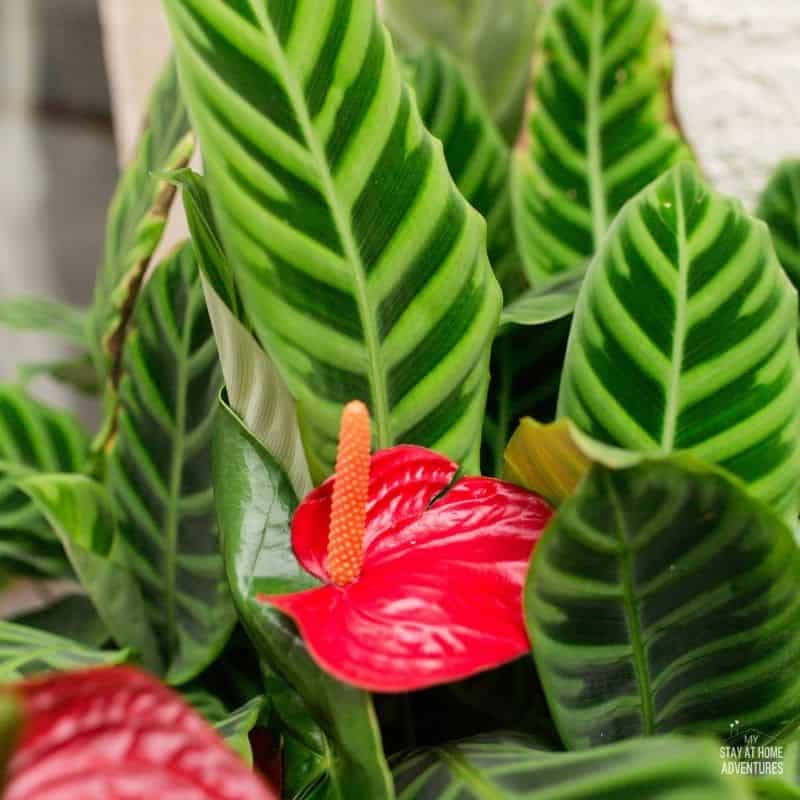
5. Calathea Plants
Also called Goeppertia, also from the family Marantaceae. It is sometimes mistaken to be the Prayer Plant because the foliage are also folding up during the evening and spread again during day time. The movements are only slight unlike the maranta. That’s why the maranta is the true Prayer Plant.
They thrive well in low light to bright indirect sunlight. When exposed to the sun, the leaves will lose color and get burnt. The plants have many different shapes, sizes and colors. They also have great patterned leaves with rich colors.
Just like the maranta, the soil should be moist but not sopping wet. They like to be in humid condition. Misting the plant from time to time will do the trick.Some people are using humidifiers for this purpose.
Propagating Calathea can be done by cutting and by dividing the roots. Dividing can be done at the time of repotting.
Some of the varieties are Zebra plant, rattlesnake plant, peacock plant.
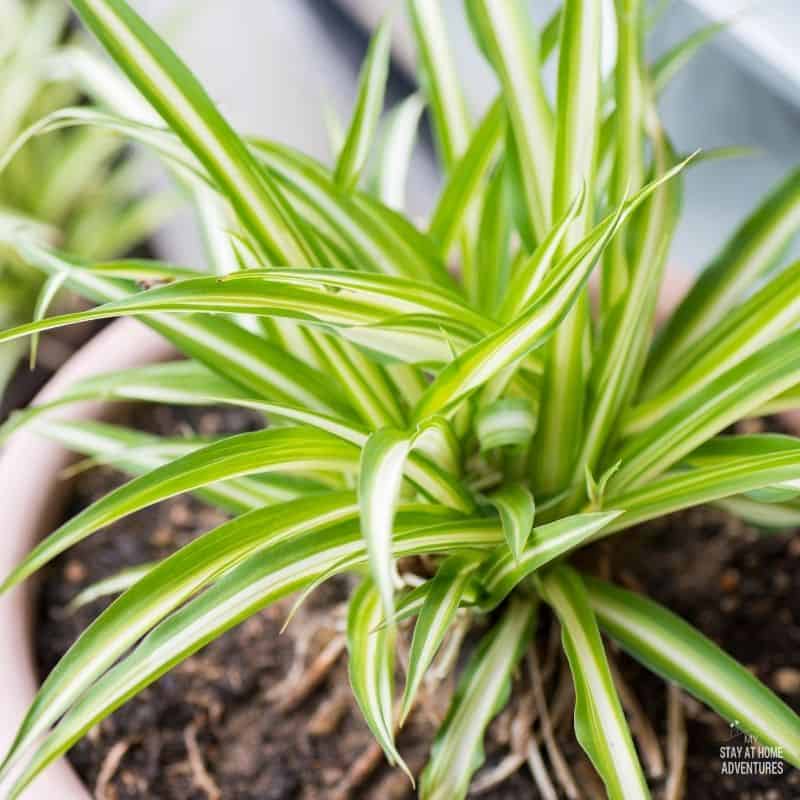
6. Spider Plants
Also known as spider ivy, ribbon plant, and hen and chickens (Chlorophytum comosum) is also a great indoor plant. They are easy to grow, very adaptable and one of the best low light houseplants.
They are called Spider plants because of the spider-like plants that dangle down from the mother plant. These spider-like or spiderettes usually start out as small flowers. They can be rooted in water or soil to grow another plant.
The varieties can be green and the variegated ones. They look great when placed in a hanging planter.
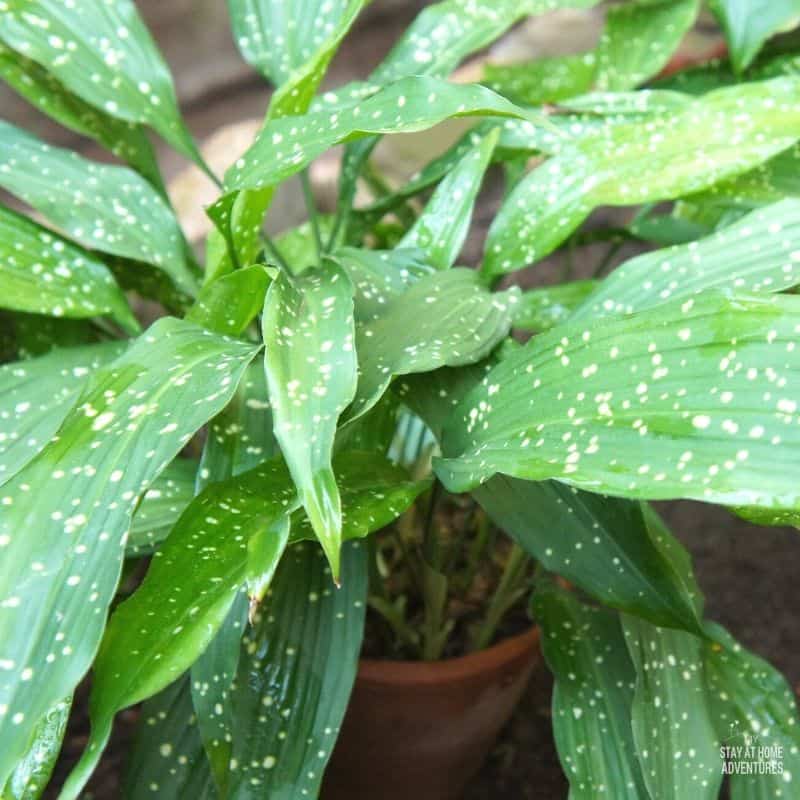
7. Cast Iron Plant
Native to Japan and China, this flowering plant is also called bar-room plant and Haran or Baran in Japan (Aspidistra elatior). This low maintenance plant can survive low light, low humidity, irregular watering and temperature fluctuations, that’s earned its name the Cast Iron Plant.
To propagate the plant, do it when you repot it. Carefully divide the “clump”, with at least 2 or 3 stems in each division.
This plant grows very slow. It may take at least a year for its next propagation.
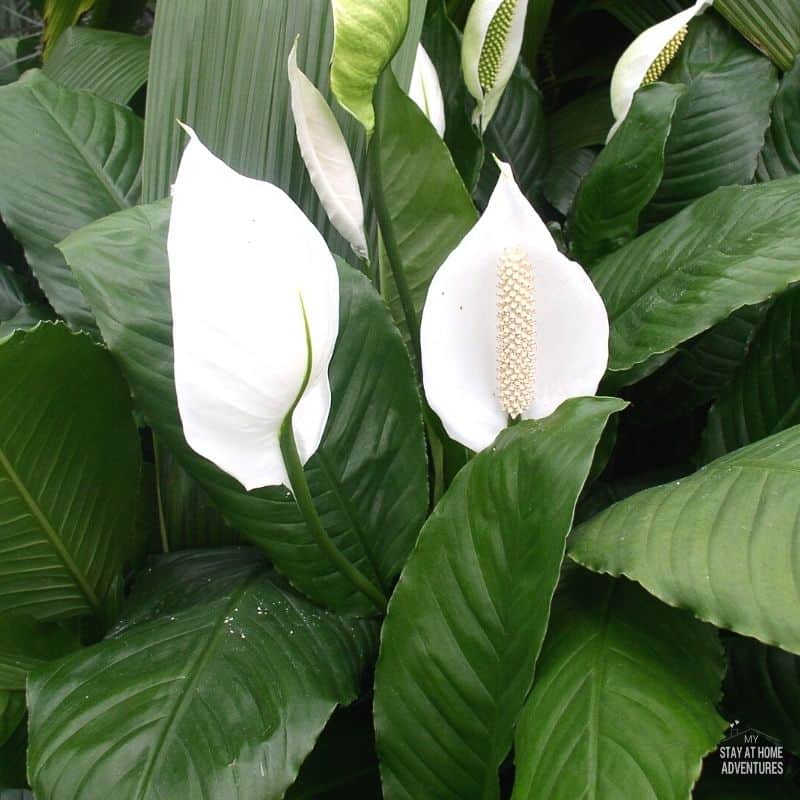
8. Peace Lily
Recognized by NASA as one of the Top Ten Household Air Cleaning Plants. Peace Lily, also called White Sails or Spathe Flower (Spathiphyllum Wallisii) is a tropical shade-loving plant, easy to care for with a forgiving nature. That makes this monocotyledonous flowering plant a very popular and one of the best low light houseplant.
Propagating Peace Lily is achieved through dividing sections of the mother plant. How much you divide it depends on the size of the plant and how many crowns it has. Once repotted, place it under bright indirect sunlight such as beside the window. It also needs regular watering and fed once a month.
Peace lilies enjoy bright light, a good watering and being fed once a month. Some of the cultivars available commercially are the larger hybrid “Mauna Loa” (named after the Hawaiian volcano), a larger one “Sensation”, and the variegated “Domino”.
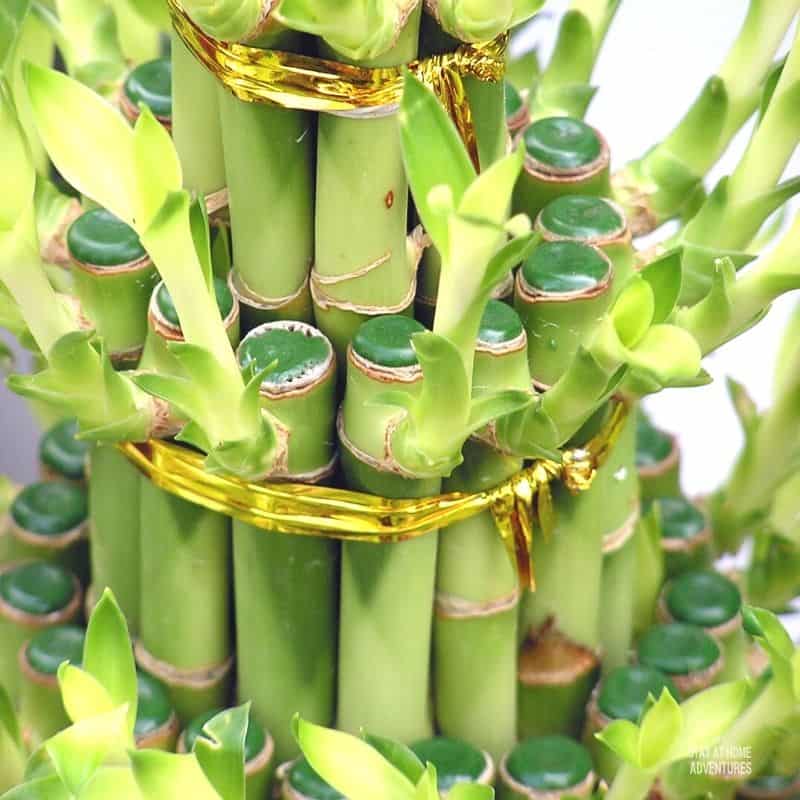
9. Lucky Bamboo
Also called Ribbon Plant, Water Bamboo, and Friendship Bamboo (Dracaena sanderiana). Native to Central Africa, this lucky bamboo is a species of flowering plant although it rarely blooms as a houseplant. It performs well in containers indoors with partial shade or bright but indirect light sunlight. The plant requires moist soil and it also can be grown in chlorine-free water.
This plant looks like bamboo but it is not actually bamboo. In some cultures, it is said that it can bring luck when you have them at home.
This plant likes bright but indirect sunlight. So don’t put this in a dim area. When growing in water, change the water every 2 weeks. When in soil, always keep it moist.
It can be propagated by cutting the mature cane and then placing it in water to root.
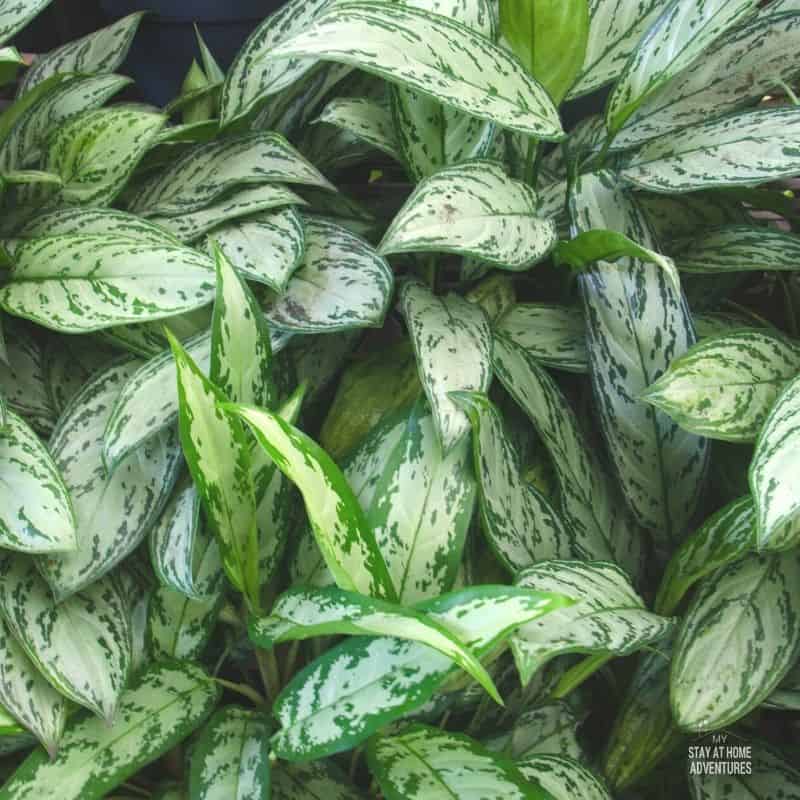
10. Chinese Evergreen
Chinese Evergreen (Aglaonema) is a tropical foliage plant and one of the most durable that can be grown. It can tolerate poor light, dry air and drought. That makes it one of the best low light houseplants.
This plant requires moderate watering. Overwatering may result in root rot. Older plants sometimes produce flowers that look like calla or peace lily.
Propagate by cutting off a stem about 6 inches long. Place in a cup with water and position in a window sill where it can get indirect sunlight. Once the root grows, you can place it in a pot with soil.
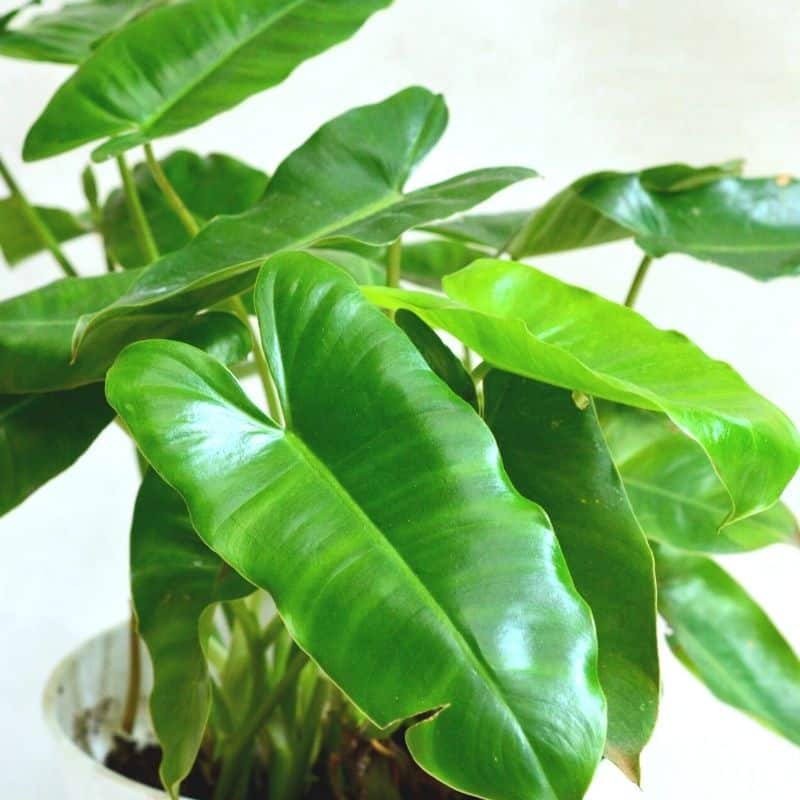
11. Philodendron
Philodendrons are becoming popular fast as indoor houseplants for their foliage shapes and size. This large genus of flowering plants in the family Araceae are over 400 species from simple small heart shaped leaf, to overgrown giant and long foliage. They are also known to clean the air just like snake plants.
There are 2 main types of philodendrons. They vining which needs some supporting structure to climb on, and non-climbing varieties. These non-climbing plants grow upright, and the width of these plants can be as much as twice their height.
They grow best in a place with medium to bright but indirect sunlight. When watering, allow an inch of topsoil to dry before watering. They grow well in loose organic soil with good drainage. It is recommended to replace your philodendron’s soil at least every couple of years.
They are very easy to grow through cuttings. Find the nodes where the leaves usually grow. Cut below it, put some rooting hormones on the cut stem and place in water or directly plant in the soil. A one leaf node can be propagated where a whole new plant will grow. The top part of the plant (with at least 3 leaves) when cut for propagation, the top part will continue to grow.
Some of the climbing varieties are Heartleaf, lemon-lime, Burle Marx, pedatum, monstera, red emerald, birkins, mayoi, mamei, mexicanum, patriciae and a lot more.
Some non-climbing varieties are Xanadu, black cardinal, martianum, selloum
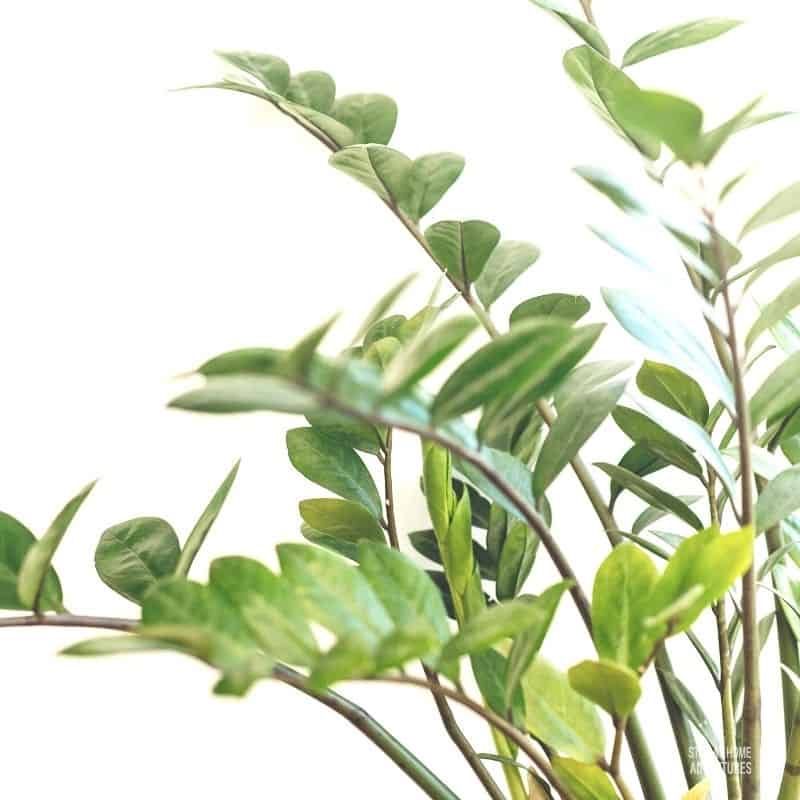
12. ZZ Plant
ZZ Plant is obviously short for Zamioculcas zamiifolia. The other names include Zanzibar gem, Zuzu plant, aroid palm, eternity plant, fat boy and emerald palm.
It is a stemless plant with pinnately compound leaves that grows up from stout underground rhizomes. It thrives in medium indirect sunlight and water every 1-2 weeks or allows the soil to dry out before watering. One of the favorite low light houseplant
There are at least 3 ways to propagate the ZZ plant. One is dividing a thick ZZ plant clump. Two is preparing cuttings from both stem and leaves, in soil or in water. Allow the cut ends to callous over. And three is by seed reproduction, which is extremely rare.
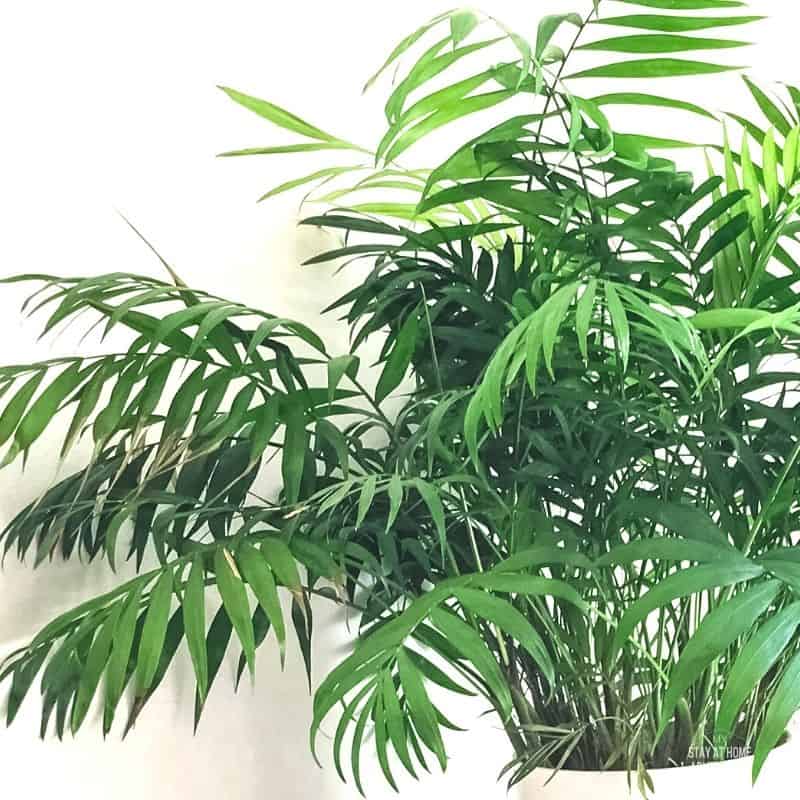
13. Parlor Palm
Also known as Neanthe Bella Parlor Palm (Chamaedorea Elegans), is one of the favorite indoor palms. It can grow on average to low indoor light, even in artificial light.
Other than the occasional removal of dead branches, there is no need to prune the plant. They are popular in flower arrangements and wreath decorations because they can survive up to 40 days after being cut from the plant.
Watering can be done every 1 to 2 weeks and allow the soil to dry out between waterings. Try not to re-pot it within 2-3 years as they don’t like their roots to be disturbed too often.
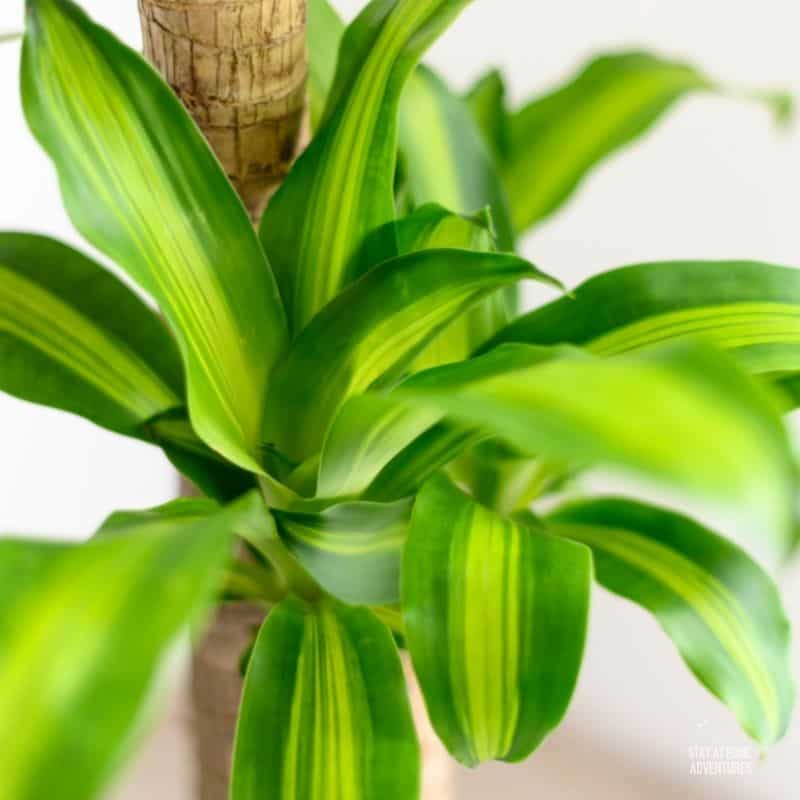
14. Corn Plant
Also called the Cornstalk plant or False Palm (Dracaena fragrans), this slow-growing tropical plant is also a popular houseplant for being low maintenance and can thrive in low lights. The leaves are spirally arranged and usually with yellow or white stripes at the center.
It also prefers moist soil and relatively medium humidity. Brown tips on the leaf mean the air around is too dry. When they are in their natural habitat, they can produce fragrant flowers, but not likely when grown indoors. But they are more popular because of their foliage.
Propagation can be easily done by stem cutting. Keep the soil moist and mist the leaves after planting the cuttings. You can also cut a new or old rosette and replant it.
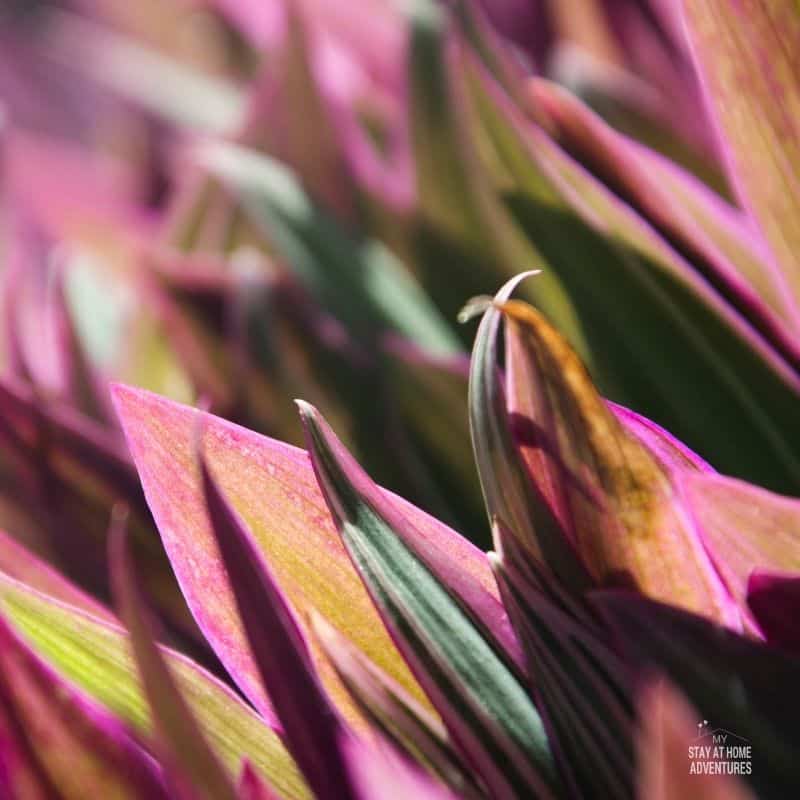
15. Oyster Plant
The other common names are boat lily, purple-leaved spiderwort, and Moses-in-the-cradle (Tradescantia spathacea) are tropical plants naturalized in North america. It became popular for its unique foliage of 3 striped colors of green, pink and white on top and purple underneath. The flowers are small and sometimes unnoticed as they grow close to each other at the base.
It is very easy to grow as a houseplant. They thrive in medium to bright light, but avoid giving them too bright and direct sunlight. Water them once a week or depending on the weather condition. Best to fertilize them in spring and summer.
They can be propagated by cutting or seed. To propagate by cutting, cut the top of the plant off to encourage the plant to produce side shoots. Cut the shoots when they reach 4-4 inches and plant the cuttings in well-drained potting soil. Cover the cuttings with plastic or glass and set in a warm but shaded location. To propagate by seed,pollinate the flowers and then harvest the seed. You can germinate the seeds throughout November and December for sowing in the spring
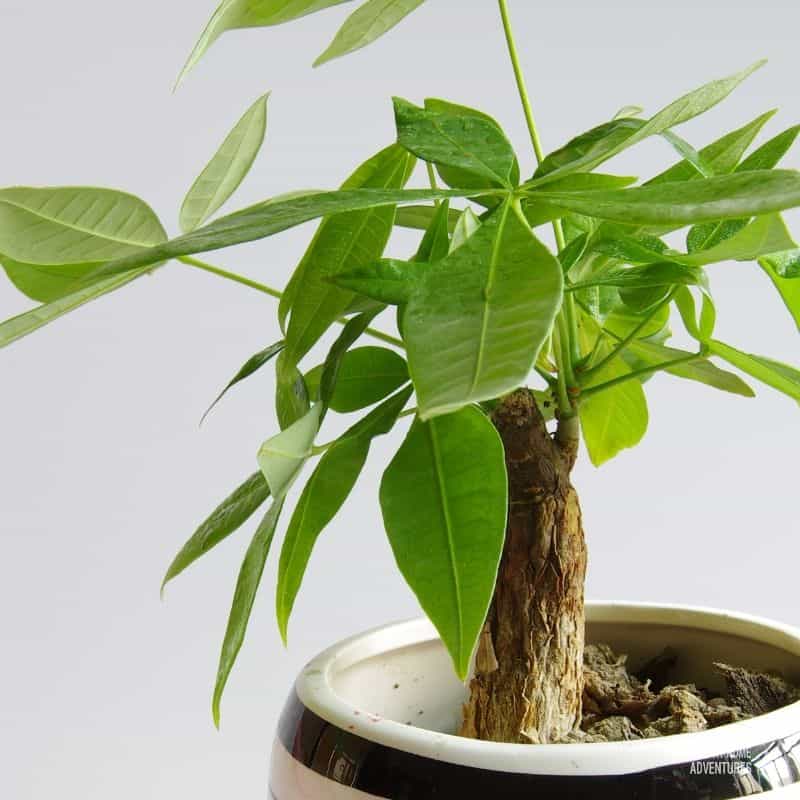
16. Money Tree
Also called money plant, Malabar chestnut, Guiana chestnut, Provision tree, and French peanut (Pachira Aquatica). It is usually sold with a braided trunk and very popular as a houseplant. It is a tropical wetland tree that usually grows in swamps. You don’t have to worry about killing them for over-watering.
This tree is an evergreen broadleaf tree with hand-shaped compound leaves consisting of up to 9 leaflets.If you are into Feng Shui, this tree is connected to good luck and fortune.
They can grow great in moderate to bright indirect sunlight, and even under fluorescent lights making them among one of the best houseplants That’s why they are very popular not only in the house but also in offices. Money trees can be fertilized monthly from spring through summer when they are growing actively.
The money tree can easily be propagated by stem cutting (about 10-15 cm), putting rooting hormone and planting them in a soilless potting medium or placing into the water to grow roots before planting into the soil.
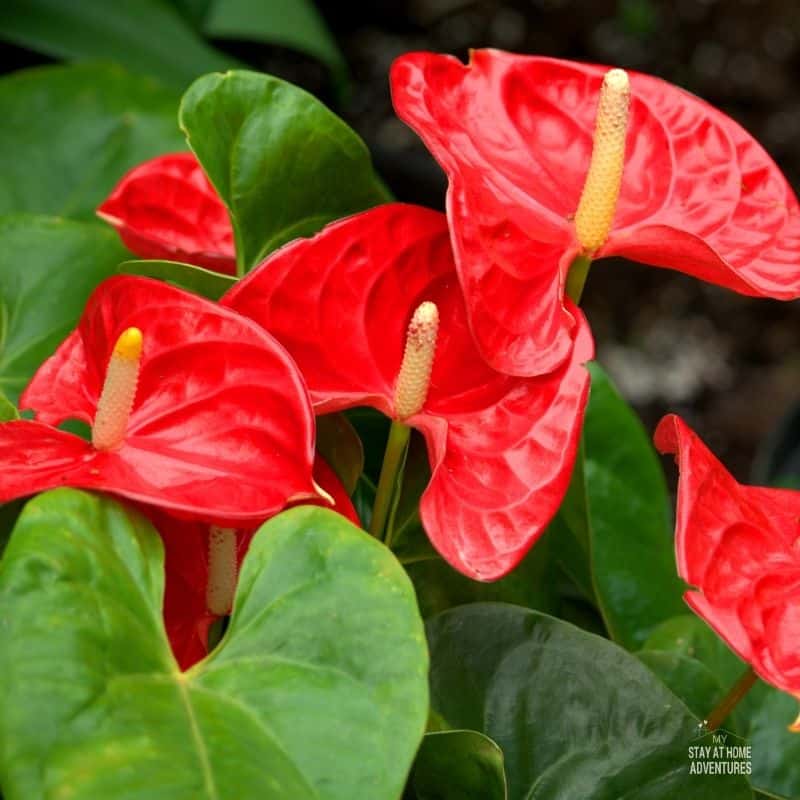
17. Anthurium
Other names are tailflower, flamingo flower, and laceleaf. Anthurium is another popular low light houseplant known for having “flowers” that last for months. But this so-called heart-shaped “flowers” are not actually flowers. These are red, white, pink, or purple waxy leaves called spathes that flare from the base of the fleshy spike where tiny flowers actually grow. This houseplant is extremely durable and only needs little care.
Anthurium prefers high humidity. Misting them can help. Or filling small trays with pebbles and water and grouping indoor plants together can slightly increase the humidity surrounding your plants. Feed the plant once a month during the growing season (spring and summer) with a complete ¼-strength liquid fertilizer.
Propagating the plant is easy by cutting off the “air roots” that grow above the soil level in the pot. Dip these root pieces in rooting hormone, and then bury them in a new pot with a fresh potting mix. Roots will start to send up stems and leaves within four to six weeks.
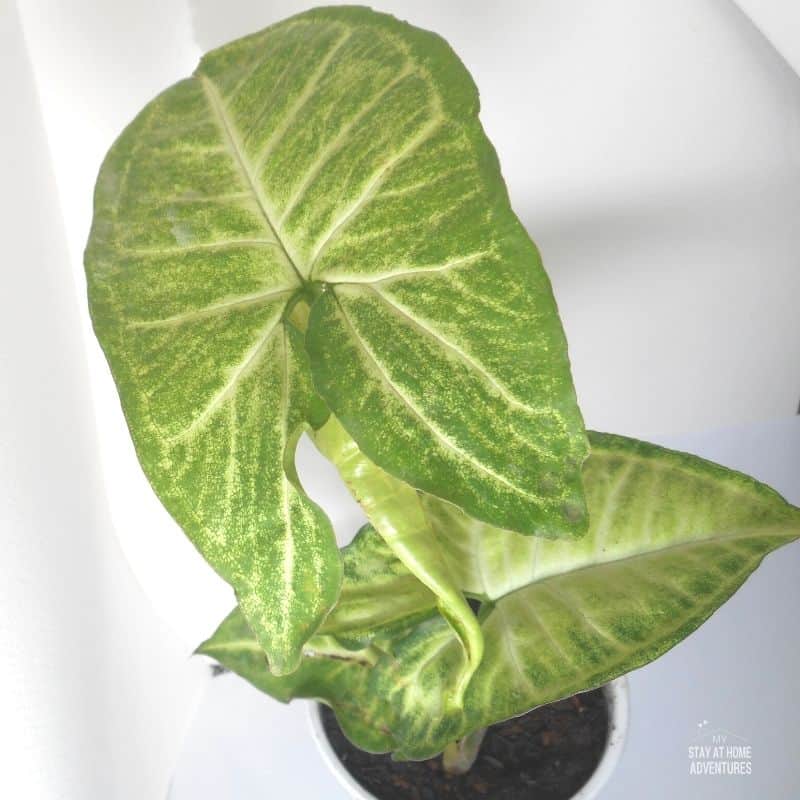
18. Arrowhead Plant
Other common names are arrowhead vine, arrowhead philodendron, goosefoot, nephthytis, African evergreen, and American evergreen (Syngonium podophyllum). This plant is native to the tropical rainforests in Central and South America and another popular low light houseplant.
It is a climbing plant that grows up to 1.5 meters when grown indoors, and has arrow-shaped leaves.
Plant care is quite easy. They enjoy some moisture but should be allowed to dry out between waterings. It requires humid conditions, especially during dry winter months. Mist the plant daily or place its container on a tray filled with pebbles and water to increase humidity. Fertilized the plant monthly with a balanced fertilizer.
Propagation can be easily done by cutting, then place into the water to grow roots, or plant directly into soil. Put some rooting hormones first before planting.
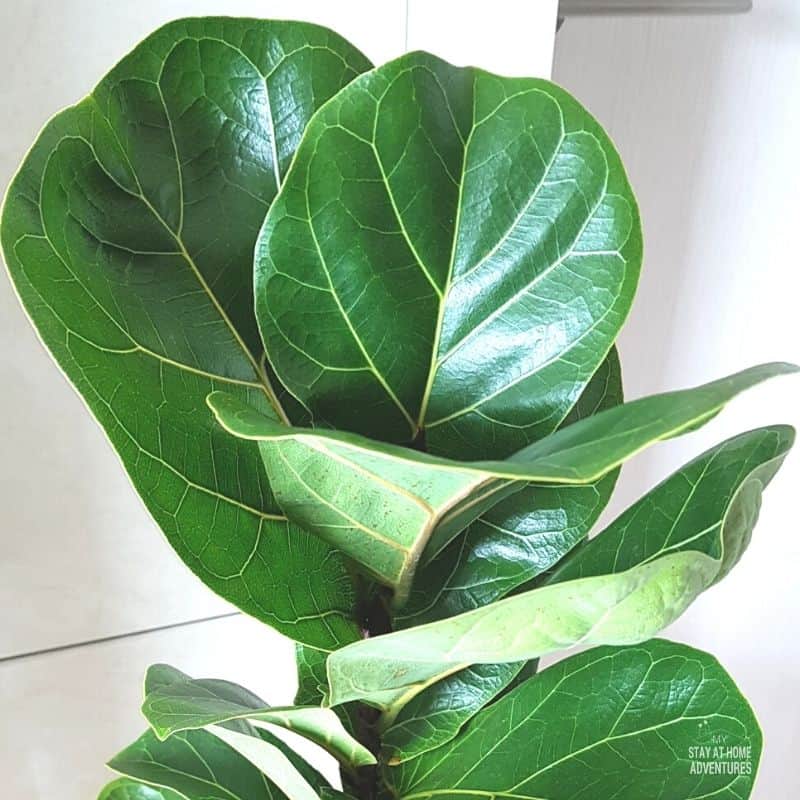
19. Rubber Plant
Also known as rubber fig, rubber bush, rubber tree, Indian rubber bush, Indian rubber tree (Ficus elastica). This plant is native to eastern parts of South Asia and Southeast Asia.
Although it grows into a large tree to about 40 meters tall when grown in its natural habitat, it also became a popular low light houseplant. The tough plants have glossy, rubber-like leaves that look great indoors. It also prefers to remain in one location and does not do well with drafts or cold temperatures.
Water the soil once it becomes slightly dry to the touch. Make sure the pot has sufficient drainage holes to allow excess water to seep through.
The rubber plant can be propagated by stem tip cuttings. Cut a few inches and allow the sap to dry for about 1 hour. Use a rooting hormone before planting the cutting in soil. Provide the bottom of the pot some heat. A heating pad can be used.
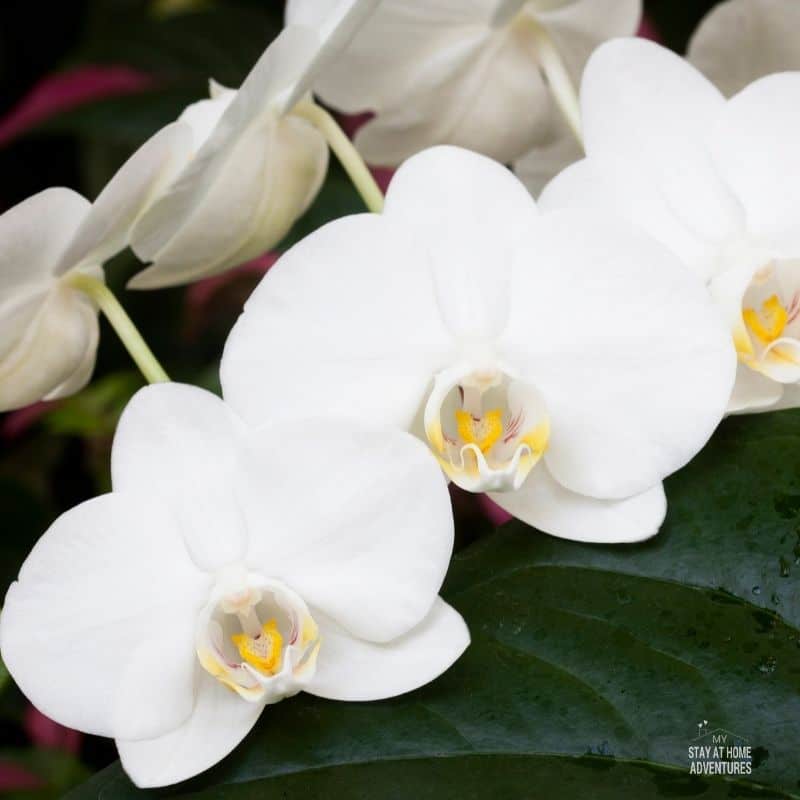
20. Moth Orchid
Moth Orchids or Phals (Phalaenopsis), have long coarse roots, with short leafy stems, and long lasting flat flowers arranged in flower spikes that branches near the end. The majority of this genus are native in Indonesia and the Philippines.
These plants are very popular not only because of their beautiful blooms but they are also one of those easy to care low light houseplants. They can do well in regular grow light, too.
These plants have low tolerance for drought as their leaves can store some water. Watering the plant can be weekly or whenever the exposed roots become silvery white. Only water the roots and keep the flowers and leaves dry to prevent rotting. Use a weak water-soluble fertilizer solution every 1-2 weeks but not during the flowering phase.
Propagating is easy by transplanting its naturally occurring offset or plantlets that grow on nodes along its spike. These plantlets are called Keikies. Keiki is a Hawaiian word for baby. A keiki rooting hormone especially formulated to encourage the growth of orchid offshoots is needed.


